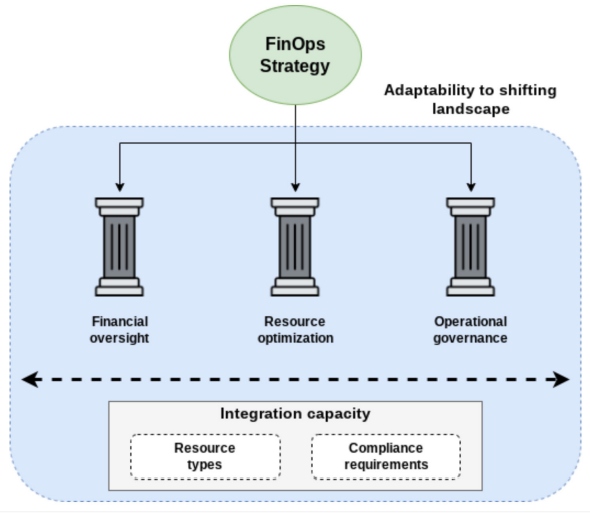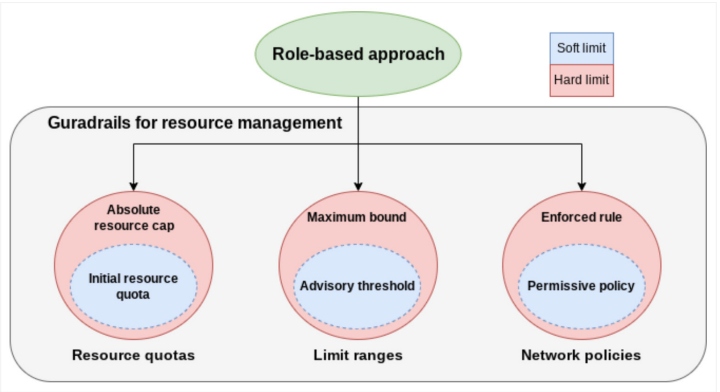Optimizing Kubernetes Costs With FinOps Best Practices
Delve into the multifaceted complexities of a distributed Kubernetes ecosystem and cost implications; discuss the recommended FinOps practices for Kubernetes.
Join the DZone community and get the full member experience.
Join For FreeThis is an article from DZone's 2023 Kubernetes in the Enterprise Trend Report.
For more:
Read the Report
The financial intricacies of Kubernetes deployments demand more than reactive measures alone. Organizations have a choice: react to costs as they arise or employ FinOps (financial operations) practices to anticipate and manage expenditures proactively. Yet the road to efficient Kubernetes FinOps is far from one-dimensional. It's an ever-evolving practice that must be fine-tuned according to operational realities and architectural demands. If a certain cost model continues to yield returns without overwhelming resources, perhaps it's due for scaling. Conversely, a recurring budgetary shortfall may signal the need for an extensive financial overhaul.
In this article, we delve into the multifaceted complexities of a distributed Kubernetes ecosystem and cost implications. We also discuss the recommended FinOps practices for Kubernetes that offer guidance on their seamless integration into overarching financial and operational frameworks.
Inherent Complexities of Kubernetes Costs
Venturing into the multi-faceted, distributed landscape of Kubernetes, one soon realizes that its cost dynamics are far from straightforward. These nuanced cost elements give rise to specific challenges in fiscal oversight that demand targeted exploration. Some cost management challenges in a Kubernetes ecosystem include cluster distribution, microservices architecture, resource heterogeneity, multi-tenancy, and compliance and security.
Cluster Distribution
Traditional, centralized-data-center models are now less relevant. Instead, deploying Kubernetes clusters across multiple regions and cloud providers is the standard approach. While this aids in high availability and fault tolerance, it introduces financial nuances as regional variations in resource pricing can skew budget forecasts. The crux of the challenge lies in regional resource pricing variances and the costs associated with data egress — often hidden fees that only surface when closely scrutinized. Additionally, latency between clusters can result in performance issues, necessitating more robust — and costly — solutions to maintain service levels.
Microservices Architecture
Besides being an architectural pivot, microservices can often result in a considerable shift in your expense structure. Disaggregating a monolith into microservices requires each service needing its own set of resources and policies for autoscaling, resiliency, and network Ingress/egress. This disintegration amplifies the volume of Pods and containers, each becoming its own line item on your budget. Service meshes, such as Istio or Linkerd, which are used to facilitate inter-service communication, add an extra layer of complexity and ultimately lead to higher costs.
Resource Heterogeneity
Kubernetes helps you orchestrate a variety of resource types, including VM-based workloads, serverless functions, or managed databases. The diversity is considered great for performance; however, since each resource type comes with its own pricing model, the heterogeneity complicates the precise correlation of resource usage and cost allocation. In addition, not all resources are billed the same way — some might incur costs per request, others per minute or per GB of data transferred. This fragmentation calls for advanced tagging and granular monitoring tools to demystify your operational expenses.
Multi-Tenancy
As enterprises scale, the practice of sharing Kubernetes cluster resources among multiple teams or projects — known as multi-tenancy — becomes more prevalent. While this strategy can be cost-efficient, it raises concerns around security and isolation. Resource quotas and limits must be set to prevent a noisy neighbor problem, where one team's activities are limited to consume resources of others. Isolated namespaces can help, but what about shared costs like cluster-level logging or monitoring? This balancing act ultimately has its own cost implications, making it vital to monitor usage carefully to ensure equitable distribution of costs among tenants.
Compliance and Security
Operating in a regulated environment adds a recurring financial burden to your Kubernetes setup. Regulations like GDPR and HIPAA mandate not just encryption but end-to-end data protection measures that extend beyond basic compliance checklists. These requirements necessitate the adoption of specialized tools, mostly third-party services, designed for secure data handling, auditing, and logging. Each of these tools or services adds its own cost layer, complicating your FinOps strategy.
Implementing FinOps for Efficient Finance Governance
When resource heterogeneity and regional pricing variations complicate the cost equation, visibility becomes paramount. FinOps bridges the gap between IT and finance, empowering teams to derive more value from their cloud spend.

Figure 1: Foundational pillars of FinOps
Although the foundational pillars of FinOps center around financial oversight, resource optimization, and operational governance, there are several other factors that strengthen its effectiveness.
The real efficacy of a FinOps strategy lies in its adaptability to shifting operational landscapes and its capacity to integrate disparate elements — be it the heterogeneity of resource types or the intricacies of compliance requirements.
Monitoring and Visibility
FinOps advocates for transparent, real-time reporting that enables you to monitor not just your total cloud expenditure, but the granular costs associated with each cluster, node, or even Pod. Real-time monitoring ensures that resource utilization aligns with allocated budgets and allows for proactive scaling decisions. If a service is consuming resources inefficiently, real-time tracking provides the intelligence needed to rectify the issue before it escalates into a financial burden.
Adopt advanced tagging and cost allocation methods for attributing costs to specific projects, departments, or teams. Once metrics are scoped, the next logical step is to delve into the tools built to track them effectively.
The following table lists some open-source FinOps tools. Each tool brings its own set of capabilities and focuses on distinct metrics that are essential to measure both financial and operational benchmarks. A typical approach is to integrate them together to form a robust, open-source stack for FinOps in Kubernetes environments.
| OPEN-SOURCE TOOLS FOR COST TRACKING IN KUBERNETES | ||
|---|---|---|
| Tool | Key Features | Critical Metrics |
| Kubecost |
|
|
| Grafana |
|
|
| Prometheus |
|
|
| Kubernetes Operational View |
|
|
| Kubernetes Resource Report |
|
|
| kube-state-metrics |
|
|
| Helm plugins |
|
|
Table 1
Resource Optimization
Resource optimization in a FinOps parlance goes beyond simple cost cutting while helping you extract maximum value from your deployments. Through predictive analytics and continuous performance monitoring, FinOps tools can identify underutilized resources and suggest consolidation. Achieving optimal financial governance in Kubernetes demands a three-pronged approach:
- Over-provisioning a container wastes compute cycles, just as under-provisioning can result in sluggish performance. Consider right-sizing containers and Pods to strike the right balance between cost control and operational efficacy.
- Accumulated idle resources drain budgets without contributing to productivity. Effective management of these dormant assets recaptures value, streamlining your financial operations.
- Scaling of resources should align with demand curves, ultimately ensuring that you pay only for what you actually use. Utilize solutions such as Kubernetes' native HorizontalPodAutoscaler or third-party offerings to dynamically adjust resource allocation.
The following table shows various recommended strategies to optimize resources:
|
RESOURCE OPTIMIZATION STRATEGIES IN KUBERNETES
|
|||
|---|---|---|---|
|
Resource Type
|
Cost Driver | Unit of Measurement | FinOps Optimization Strategies |
| Nodes | Compute power | CPU cores, RAM | Right-sizing, spot instances |
| Pods | Compute and storage | CPU, memory, disk | Resource limit/quota settings |
| Services | Network traffic | Data transfer | Load balancing, caching |
| Storage | Data retention | GB, IOPS | Dynamic provisioning |
| Ingress | Data traffic | Requests/sec | Rate limiting, geo-fencing |
Table 2
Budget Forecasting
When it comes to budget forecasting of a Kubernetes setup, the best approach aligns overarching key performance indicators (KPIs) with granular system metrics. This multi-layered approach enriches your financial strategy, adding depth and detail to fiscal planning. Kubernetes namespaces serve as effective categorization tools, categorizing your costs to project-level granularity. Metrics from tools like Prometheus or Grafana can further refine your budget models by providing insights into resource utilization. This facilitates agile budgeting practices, enabling dynamic allocation of funds to projects based on their real-time resource consumption.
Perhaps the most pivotal aspect of budget forecasting is the integration of system metrics with business KPIs. Metrics such as CPU usage, memory allocation, and I/O operations not only indicate system performance but also translate into quantifiable costs. This integration yields a multi-dimensional financial strategy that accommodates both operational realities and business objectives. For instance, a KPI focused on maximizing application uptime would directly influence budget allocations toward fault tolerance and high-availability solutions.
Governance and Control
A clear framework of roles and permissions stands at the core of effective financial governance in Kubernetes. Assigning distinct roles — like developers overseeing deployments within budget confines and financial teams supervising expenditures — enriches your cost visibility. This built-in structure mitigates the risk of uncontrolled spending.
A role-based approach is further strengthened by implementing resource constraints in Kubernetes, using features like resource quotas, limit ranges, and network policies. These guardrails help implement "soft" and "hard" limits to prevent resource overutilization.

Figure 2: Implementing resource constraints
Following the definition of roles and limits, FinOps policies are the pillars upon which everything is built. These hard-coded guidelines act as the governance playbook, aligning both financial planning and operational strategy. From outlining minimum security standards to delineating the resource scaling approval process, these policies act as your rulebook for fiscal control.
Conclusion
The success of a FinOps practice in Kubernetes is shaped by various factors, from distributed services and multi-tenancy to compliance and security. While these complexities bring challenges, they also offer opportunities for refined cost control and performance optimization.
However, mastering these variables requires a continuous process of calibration and readjustment. This doesn't undermine the significance of FinOps practices, though. On the contrary, it emphasizes the need to augment them with specialized tools, granular analytics, and team collaboration. Such a comprehensive stance fosters a culture that prioritizes fiscal prudence, maximizes efficiency, and innovates in the face of Kubernetes's financial complexities.
Resources:
- The FinOps and MLOps platform by OptScale, GitHub
- "Adopting FinOps Tool for Pod-Level Kubernetes Cost Management" by Asaf Liveanu, CNCF
This is an article from DZone's 2023 Kubernetes in the Enterprise Trend Report.
For more:
Read the Report
Opinions expressed by DZone contributors are their own.

Comments